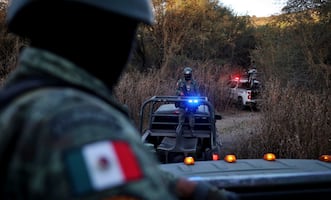Más Información

Vinculan a proceso a "El Yeicob", socio del empresario Raúl Rocha, por delincuencia organizada; le dictan prisión preventiva

Vinculan a proceso a "El Limones" por narcotráfico y posesión de armas; continúa en prisión en el Altiplano

UIF respalda sanciones de EU contra el Cártel de Santa Rosa de Lima; fortalece esfuerzos conjuntos para reducir criminalidad, destaca
Mexican biologist Exequiel Ezcurra
pointed out that Mesoamerica did not suffer as much degradation of its ecosystems due to Mexico’s Conquest (1519-1521) because the native flora and fauna were not as pure as thought.
“ Mexico’s basin found by [Hernán] Cortés was not a pure ecosystem; it had a very deep human footprint ,” said Ezcurra
He explained that “there had already passed thousands of years in which human beings had affected the ecosystem in different ways, increasing some species, reducing others, changing nature in the basin.”
Have you heard of
?
The National Commission for Knowledge and Use of Biodiversity (CONABIO) carried out a research that considers the regions through which the Spanish colonizer went to arrive at Tenochtitlán and how they have changed through the years.
To have a more precise route of the Spanish journey from San Antón, Cuba to México-Tenochtitlán , they were based on the “ Second Relation Letter from Hernán Cortés ,” “ The True History of the Conquest of Mexico ” by Bernal Díaz del Castillo, and “ Cortés’s Route ” of the Citlaltepetl Club directed by Nicanor Gorráez.
The vegetation map by Jerzy Rzedowski , a Polish botanist naturalized Mexican, allowed biologists like José Sarukhán to conclude that the states of Veracruz, Tabasco, and Tlaxcala are the ones that currently have a greater ecosystem loss.
This is due in great part to “the colonization starting there and with that, the population increased.”
Did you know climate change
?
Ezcurra suggests that 400 years had to pass since the Conquest for Mexico to have the population it used to have prior to the arrival of the Spanish since many natives died because of smallpox .
He highlighted that what Cortés saw in 500 km when he arrived in Mesoamerica , was more vegetation than what can be seen from Gibraltar to the Pyrenees in Spain .
“In a small basin, he found more ecosystems than he had ever seen in his life in all Europe , “ he explained.
He also said that another discovery for the Spanish was to observe that there were crops of endemic species in Mexico, for, in the Iberian Peninsula , people did not use to grow species from their country.
Have you heard of the
?
“[In Spain] the grew exotic species . They farmed seeds from the Middle East, barley, rye, oatmeal, wheat, and some legumes (...)” he said.
Cortés arrived at the Mexican shore in March 1519 by the coast of Cozumel and after following the coastline, he arrived at Veracruz where he founded the Rich Town of Veracruz from where he went to the center of the country in a journey that ended in the colonization of the Mexica Empire in August 1521 .
Did you know Mayan culture met
?
mp
Noticias según tus intereses
[Publicidad]
[Publicidad]











